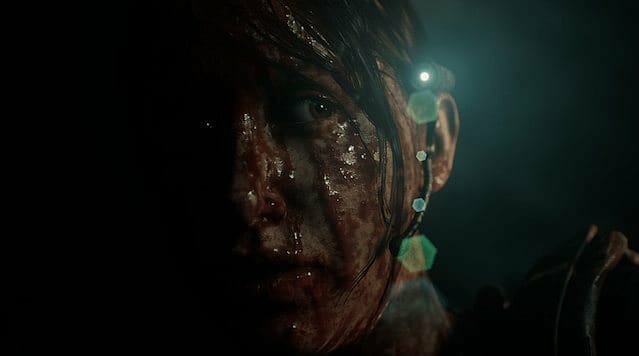
The House of Ashes is a new book by author James Patterson. It’s a mystery/suspense novel in which the protagonist, a young girl named Kate, finds herself trapped in a house with no windows and no exit. She must figure out how to escape from the house before she runs out of oxygen.
The house of ashes wiki is a book written by Joshua Hale Fialkov. It tells the story of a group of teenagers who are trying to survive in an apocalyptic world.
The first three games in the Dark Pictures Anthology have already been released, with a total of eight titles planned if Supermassive has its way. In terms of concept, it’s a show I support. I’d love to see a fantastic horror anthology that I could look forward to every Halloween.
The Dark Pictures hasn’t quite made it to the top of the heap yet, and its most recent film, House of Ashes, isn’t going to help it get there. This military horror game makes significant development as a game, but its movie-like screenplay still needs a few final elements that would win it similar acclaim as a tale.
House of Ashes Review: A Glimmer of Hope in the Dark
Players take on the roles of five distinct individuals in House of Ashes. The majority of them are American troops who are employing cutting-edge equipment to aid in the search for Saddam Hussein’s mythical WMDs. When no WMDs are discovered and the technology proves to be defective, those responsible can scarcely be held accountable before the whole group sinks hundreds of feet below the surface.
The battle they fought with the Iraqis above turned out to have uncovered hidden Sumerian remains buried under millennia of civilisation. It would be terrible enough if they were just buried into the ground with no means of escaping. It’s exacerbated worse by the presence of Republican Guard troops in the area. Worst of all, something is lurking in the dark, snatching troops regardless of clothing.
This anthology’s first act is the most powerful yet. The decision to move the series back to 2003 and address something as contentious as the second Iraq War is a brave one, but Supermassive does it in good faith in order to tell a narrative about the two sides cooperating to fight a shared (and otherworldly) adversary.
However, since House of Ashes suffers from the same problem that many Dark Pictures games do: boring people, those ideas wind up seeming a little vacuous.
Ashley Tisdale, like Shawn Ashmore and Will Poulter before her, is a familiar figure in this round of Supermassive’s horror tales, and although she does a decent job of moving away from her Disney Channel origins, none of the interpersonal drama is as compelling as the action itself.
That’s a problem in a game that’s supposed to be like a movie.
Tisdale’s love triangle is based on clichés from the start. As the gang fears for their life, a hamfisted, theatrical debate about who loves whom seems like outrageously poor timing. It’s almost comedic, if it weren’t for the fact that this game is always self-aware. The rah-rah marines discover a friend in one of the Iraqi soldiers trapped in hell with them, but it’s all quite predictable.
You’ll hear a lot about the unlawful invasion, but it’ll just be a talking head segment in between life insurance commercials. You’ll discover that the Iraqi soldier has a son, but it seems like a cheap way to make gamers care about the guy. Many of the characters suffer from the same stereotypes. You can tell which characters are just redshirts who won’t survive more than a few minutes.
Thankfully, the gameplay in House of Ashes is the finest this franchise has ever been. If you’ve played any of these games (or Until Dawn), you’re already familiar with the formula: third-person cinematic gameplay with a strong dosage of QTEs and difficult conversation choices in a narrative where anybody may die.
House of Ashes improves on this tried-and-true approach in many ways. For starters, the camerawork has vastly improved. To better mimic a Hollywood production, previous games in the series have gone all-in on fixed camera angles. House of Ashes foregoes this in favor of a more fluid over-the-shoulder camera, although one that is a little farther back than in previous games.
This significantly reduces the uncomfortable and jerky motions that the series has been renowned for in the past. Now you can see where you’re going better – at least from a camera angle standpoint. After all, it’s still dark in the caverns.
Another enhancement provided by Supermassive is the addition of new difficulty levels that may increase the tension in quick-time events and make your actions less forgiving in general. I spent the most of my time on the normal level, but when that meant beating the game without losing any of my characters in a game that thrives on its tough decisions, I went back and attempted it on hard, only to enjoy my time much more since the stakes seemed much greater.
The greatest thing House of Ashes accomplishes differently is the way its mechanics are implemented. In previous games of this kind, your most important choice was almost always based on your actions. Do you want to rescue this or that character? Do you speak the truth or do you tell lies? In these games, the choices are constantly active and need involvement. There are more chances to accomplish something important in House of Ashes by committing to inactivity.
In my favorite example, my reluctance to cut connections with one character, even when it seemed that doing so would doom another, ended up being the reason why both characters survived my tale. There are a number of examples of this. Another interesting recurrent inaction is not firing a gun despite the game prompting you to do so and giving you a brief timeframe. You’ll frequently idle into the ideal result if you can examine the context of a situation rather than simply the instructions.
It requires you to engage in the narrative rather than just following the on-screen instructions. It reminds me of my favorite moment from last year’s Little Hope, except this time I behaved badly and murdered someone. In House of Ashes, I feel rewarded for paying attention and understanding when to exhibit some physical and metaphorical trigger discipline.
House of Ashes works as a stand-in for your next horror movie marathon choice because it looks beautiful — as in, one of the best-looking games of the year — yet it’s still enjoyable to play in co-op mode. It’ll certainly take more than one night to complete, with each playing lasting around five to six hours, but a few groan-inducing character choices don’t make it unplayable, just unsatisfied.
The Bottom Line in the House of Ashes Review
Pros
- Improved and more thoughtful gameplay moments
- The amount of jank is significantly reduced with better camerawork.
- Every frame has lovely sights.
Cons
- The characters aren’t very interesting.
- The story lays the stage for intriguing criticism, but ultimately falls victim to cliches.
Overall, House of Ashes seems better than Little Hope, which I thought was much superior than Man of Medan. That implies The Dark Pictures entries are, in my opinion, on the rise, and I really hope Supermassive can continue to produce them.
While I don’t believe this series has yet reached its full potential, I believe it is just one excellent script away from doing so. The Dark Pictures is now in a fantastic position as a game. As a screenplay, this third installment of the series aims for The Descent and barely manages to be OK.
[Note: The Dark Pictures Anthology: House of Ashes was given by Supermassive Games for this review.]
House of Ashes is a new horror movie from Netflix. It is a bright spot for the dark pictures. The story follows two friends, who are trying to escape their haunted house, and the evil ghost that haunts it. Reference: house of ashes pazuzu.
Related Tags
- house of ashes rating
- house of ashes ps5 review
- the dark pictures: house of ashes – playstation 5
- house of ashes cast













